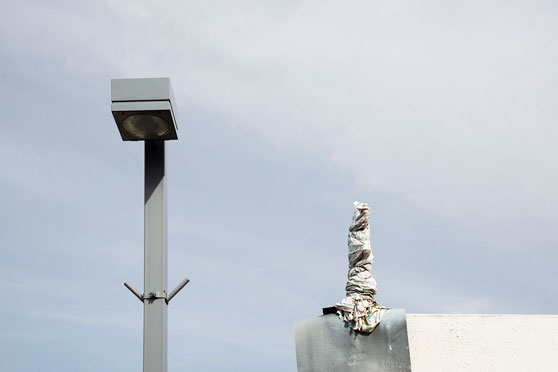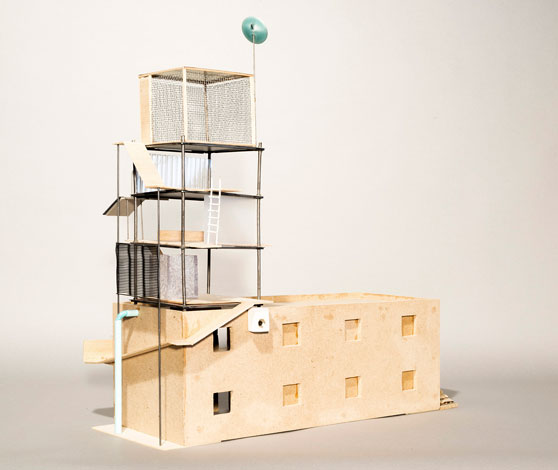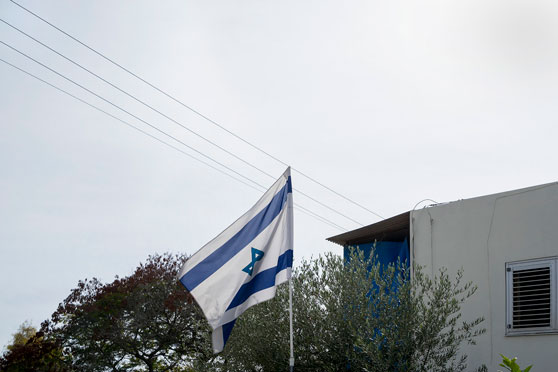More:
News & Stories
"Shapira": A Neighborhood in Flux
"Shapira": A Neighborhood in Flux
A new exhibition at the "Vitrina Gallery" showcases a unique collaboration between architect Yoav Meiri and artist Roi Kuper on the transitions in this multicultural neighborhood.

Yoav Meiri, a Senior Lecturer in HIT’s Department of Interior Design who lives and works in south Tel Aviv, and Roi Kuper, an artist who is also a south Tel Aviv resident and a Senior Lecturer at the Shenkar School of Design, have worked together to visually demonstrate the complexity and changes which the Shapira neighborhood has undergone in recent years.
The exhibition features architectural models by architect Yoav Meiri alongside photographic works by artist Roi Kuper.

Kuper and Meiri's approach to the subject reflects current attempts worldwide to recognize the creative and economic value of ‘appropriation’ of the renewal or construction process by the local residents themselves. Around the world, low-income housing has traditionally been relegated to more remote areas of the city, and usually are comprised of smaller living spaces. In order to compensate for this, tenants choose to expand their apartment themselves.
The working premise of this exhibition is that it is acceptable to agree to such an agenda, and refine it. Such a reality will only come to fruition if it is agreed that the role of the architect is in the initial stage in the construction of the living environment, and that the work of the tenant is no less important and perhaps even more so.

Prof. Tali Hatuka, a theoretical researcher of the Urban Space at Tel Aviv University, who authored the text for the exhibition and also edited the catalog: "The common core of the partnership between Roi Kuper and Yoav Meiri is an attempt to propose new strategies for residential architecture in Israel. The starting point of Kuper's work (photography) and Meiri (architecture) offers two major changes – a change in our perspective on living environments brought about by the change in construction guidelines in Israel. The assumption is that a change in perspective will allow a change in architectural planning and implementation trends. The two bodies of work complement each other in their own unique way, and suggest that we should acceptthe aesthetics and order of the Israeli space - crumbling, patched, built and neglected."
Kuper's work seeks to look at the living environments in Israel with sober and sympathetic eyes, observing that space is a unique and integral aspect of Israeli ‘order’. It is an ‘order’ that does not need to be "fixed", but rather to be understood in depth, so that we can know who we are and how we should develop our environment. This needs to occur not by importing laws and the definition of ‘order’ from outside, but by understanding our own culture.
Roi Kuper's photographic works depict the freedom within the ‘order’, the planning regulations and the laws. The camera isolates elements, decreases the crowding and proposes consideration of the additions and anomalies in Israeli construction as ‘decorative’. Kuper suggests to look at the poetics and aesthetics of these additions. The creative freedom of the tenants is not perceived as a whim, but as an expression of a functional need by people for another room, pergola or balcony.

Yoav Meiri addresses the phenomenon of the failure of the planning system to instill ‘order’ through legislative and police bureaucratic tools. Meiri recognizes repetitive elements such as stairs, pergolas, solar water heaters or a balcony, and offers to work with them and not fight them. Using models of work (which do not deal with documentation) of residential units, he creates new possibilities for working with the illegal elements, which can be found in almost every built environment in Israel. The models are open compositions on which elements can be added. In fact, Meiri suggests that another concept can be added to the architectural language – ‘additions’.
In the accompanying treatise of the works, Meiri states that public and private spaces are not necessarily separate. He points out that each situation must be treated in a unique way according to common sense; that the building facades also belong to the tenants (inside and out). Tenants should be allowed to do to their apartment as they wish; and perhaps this starting point is not so much as revolutionary but a reflection of local reality.
The recommendations in Meiri's manifesto raise complex questions not only about the profession but especially about the Israeli architectural experience, which is in its infancy and has difficulty maintaining a permanent order over time. Perhaps, as Meiri suggests, the ‘informal’ is a trait that urban planners and architects should know and learn to work with.
Dr. Dalia Manor, Curator of the Vitrina Gallery: “The exhibition "Shapira" embodies the Gallery’s vision of combining art and design from a broader context, in keeping with HIT’s vision of opening itself to the community. The exhibition reflects the first of several proposals received for exhibition in the Gallery.
Roi Cooper's photographs and Yoav Meiri's models offer an interesting aesthetic look at phenomena that are often considered outside the scope of design and aesthetics. There is no doubt that the exhibition will change the viewers' point of view towards phenomena similar to those seen elsewhere in the country.
The "Shapira" exhibition will be on display
between 27/1/22 - 11/3/22
Opening hours: Sunday-Thursday 10:00 to 17:00
Posted: 26/01/2022
- News & Events
International Week of Interdisciplinary Studies and Academic Collaborations in Crete
A substantial delegation of 16 students and four faculty members from HIT Holon Institute of Technology participated in week-long international activities and events at HMU-Hellenic Mediterranean University in Crete. ...


 Additional programs
Additional programs
